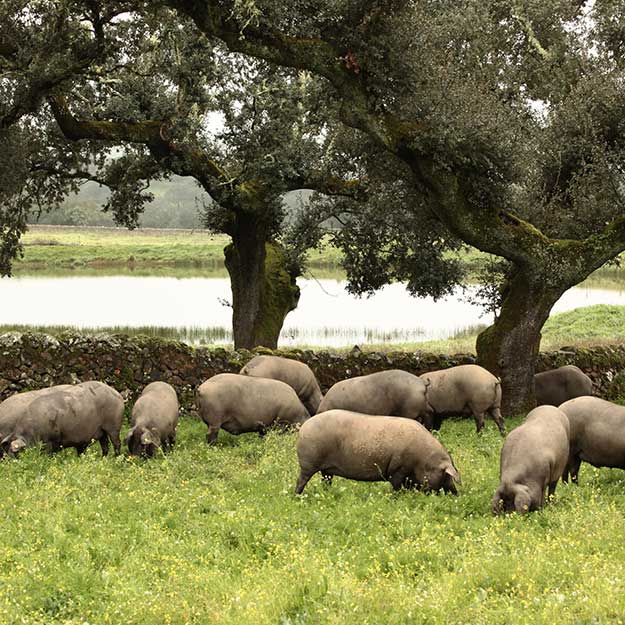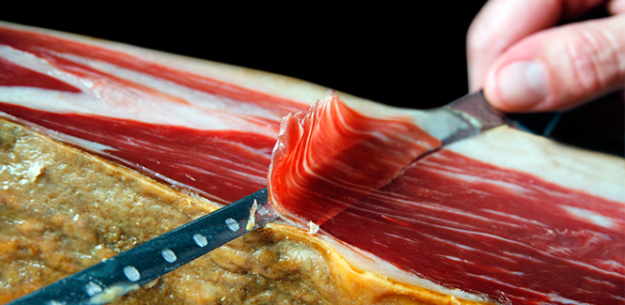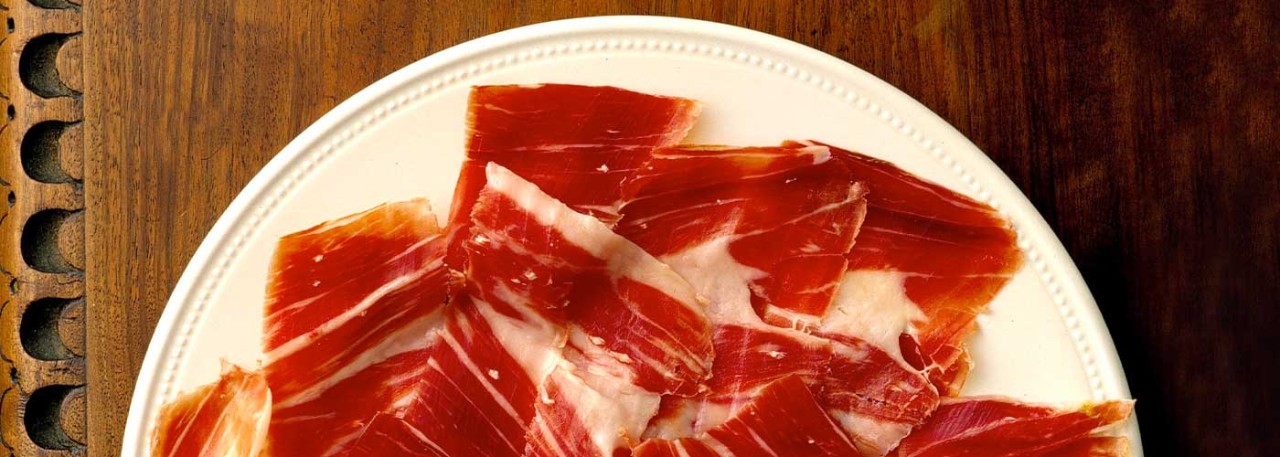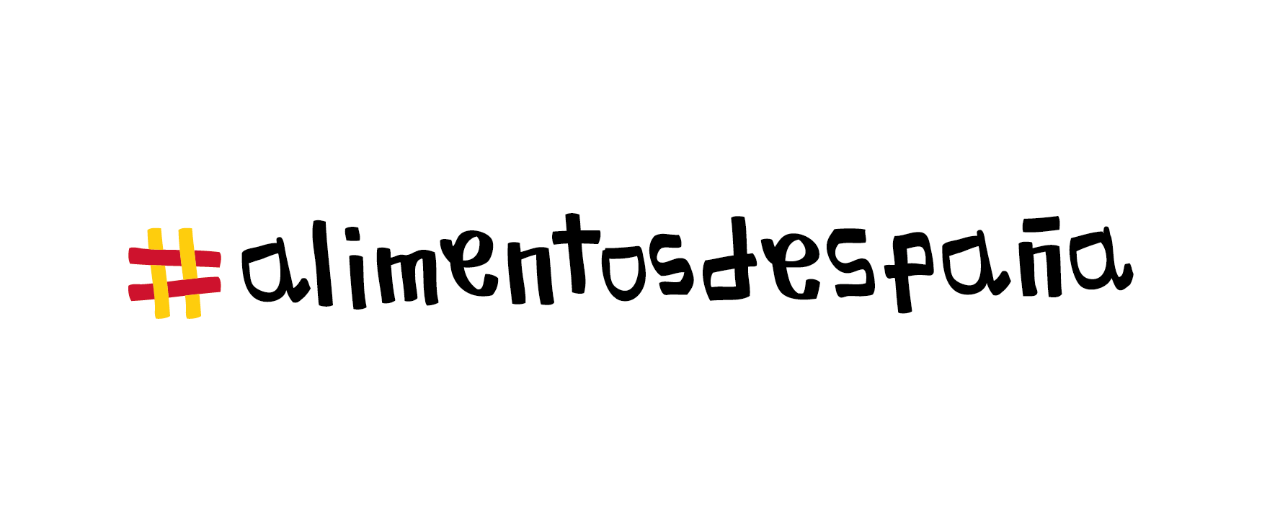.png.transform/rendition-xs/image_image%20(1).png)
VOGUE CHINA - Jamón, That Heavenly Treasure
We're going to tell you about the origin, essence and virtues of one of the great treassures of Spanish gastronomy.

Nothing will ever be the same again after trying a rasher of jamón for the first time.
Something happens inside: a “click” in the brain warns the senses of that very moment the taste buds get all worked up and an intense —and pleasurable— flavor invades every little inch of your mouth, to be remembered for the rest of your life.
There’s no doubt about it: you’ve just experienced all the glory of joy, and it’s logical. In the end, we’re talking about one of the great treasures of Spanish gastronomy. What else could be expected?
A LITTLE HISTORY
The thing is this amazing love affair between Spain and jamón dates back many, many years. So many years that, in order to find its origins, one must go back to the time when the Celts lived on Iberian land: They were the first to turn pigs into one of the basic products in their diet and were already looking into ways to cure meat using salt.
Of all the parts of a pig, ham became the most valuable because of the flavor and juiciness. Two thousand years have passed since that time with all sorts of findings, stories, conflicts and progress coming to shape a very different reality. However, one thing has absolutely never changed: Spain continues to be the land of ham par excellence.

THE KEY TO JAMÓN IBÉRICO
That the Iberian ham exceeds any expectation is no surprise. Its meat, always cut into thin slices perfect to be able to analyze each nuance and each texture, is simply unique. With a particularly mild flavor between sweet and sour and with a long and lingering aftertaste, there is no similar product anywhere else in the world to compare it to. But what is it that makes it so sublime?
The Iberian pig comes from a breed of wild boar that centuries ago roamed the Mediterranean basin. In addition to its characteristics of elongated legs, strong and pointed snout and dark skin and hooves, there is a fundamental factor in it that causes its quality to be extraordinary: the natural environment in which it is raised. We are talking about the dehesa, an ecological ecosystem formed by large areas of land cultivated by man, very rich in biodiversity: a whole model of sustainable development with great economic and social value. In its land, which ex-tends over thousands of hectares, holm oaks and cork oaks reign everywhere and where pigs graze freely in search of the food they need.
However, the key is in the montanera period: it is the time of the year that elapses between autumn and the end of winter, when the acorn ripens and falls to the ground, allowing the Iberian pig to enjoy a real feast. Such is the banquet that in just three months he can gain weight up to 70 kilos. The consequence of complet-ing your diet in this way? The acorns provide the unsaturated fats that, thanks to the physical activity carried out when wandering around the pasture, end up infiltrating the ham, making it an absolute delicacy.
A delight that, at the same time, is the healthiest: its high oleic acid content means that eating Iberian ham has a beneficial effect on blood cholesterol, raising the level of good cholesterol (HDL). At the same time, its low levels of saturated fatty acids favor the reduction of bad cholesterol (LDL). But in addition, the Iberian is also rich in iron, folic acid, vitamin E and minerals such as calcium, iron or magnesium. It's great and it's also healthy, what more could you ask for?

EVERYTHING YOU NEED TO KNOW ... TO ENJOY IT!
The variety of Iberian ham is as wide as the food they can receive is varied, crucial when it comes to differentiating the various categories. How to recognize them? It is very simple: the key is in the color seal that the legs and shoulders of Iberian ham carry in the upper part.
Both the black and red labels are for Iberian pigs fed only with acorns, in addition to other natural resources from the pasture, only that the former is the only one of 100% Iberian breed. The green label? For Iberian field fattening pigs, fed on herbs and natural resources, but without acorn. The last one, the white one, is for Iberian bait hams, which have been raised with natural feed and in feedlots.
And if after this immersion in the world of ham, the head only thinks of that blessed moment in which, finally, feel the unforgettable sensation of tasting it, let's point out: the most famous Iberian hams are those that have their own Protected Designation of Origin : the Jabugo PDO, the Dehesa de Extremadura PDO, Guijuelo PDO and Los Pedroches PDO are our objective.
To eat it, the possibilities are maximum, especially since we are talking about a product that can be consumed throughout the year, and that is wonderful!
Not only freshly cut slices is a delight: they also add an unmistakable flavor and touch to the dishes to which they are added as an ingredient. That is why betting on preparing it with vegetables, as a final touch to meat or fish, in salads or sautéed with legumes, will always be a success.
And not to forget tapas, whether in croquetas, cheese or simply on some toasted bread with tomato, once you taste it there’s no going back!






